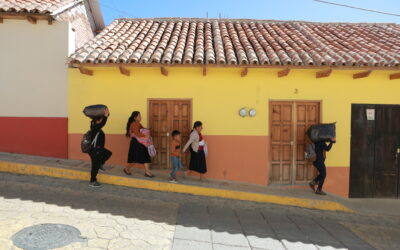In India, 40% of the population lives on less than $1.25 per day.
Many of them are women living in poor, rural areas. Women take what few work opportunities they can find, mostly daily wage labor. Earning an income was back breaking work for Sanaka Sardar. She is 32 years old, a single mother of two. She had to migrate to Kolkata to do road work for meager pay, leaving her children behind. Caught in a generational cycle of poverty, she had no clear way out. Six sheep to start, materials for a shed, training on how to raise her sheep, mentoring and support, membership in a women’s savings group, gaining confidence every step of the way.
“The situation has changed since Trickle Up. We used to spend the money on rice only but now we are also eating lentils, vegetables and fish two or three times a week.”
“I like to be home and look after my business and family. I can pay attention to my children’s education.”
“Now, when I want to expand my business, I can borrow from my savings group.”
Before, Sanaka had never learned to plan for the future. Now she has set goals: To continue earning a steady income in order to be less vulnerable, to own a house and fish pond, to lease land for agriculture, and to educate her children.
This year, Trickle Up’s India program will help thousands of women write a story of new hope, like Sanaka.


